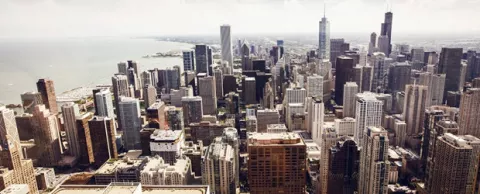
Predicting what's to come in a new year is at worst guesswork and at best a well-reasoned forecast based on the evolution of trends and developments, things we already know about, that look like they'll have a trajectory well into the future. The smart cities space is no different. We've all seen hype and buzz about 'emerging' technologies, concepts or services that, well, didn't quite emerge.
What can we really expect for smart cities in 2019? We asked Itai Dadon, Council Global Lead Partner Itron's Director of Smart Cities and IoT, to answer that question. In the interview below, he shares his insights and what he's excited about for the coming year.
And if you haven't already, apply for our 2019 Smart Cities Readiness Challenge, a year-long Readiness program that can help accelerate yourt smart cities efforts whether or not you win.— Doug Peeples
Use what you've already got
Dadon and the company he works for are well aware that electric utilities and cities have a lot to offer each other. As we've said many times before, electric companies and cities with smart city ambitions are natural partners.
"Looking at the smart cities market, it's incredible that we have an industry serving every single home, and a wonderful place to focus on services needed at homes. We'll see more and more utilities getting involved in smart cities activities and discussion," Dadon said.
And, he said the advanced metering infrastructure (AMI) and automated meter reading (AMR) electric companies have introduced were intentionally "…over-dimensioned, because our expectation of requirements would change as we better understood how to use the data collected. In the beginning, AMI was just to collect energy use data. Now we can use the real-time data to help people be more energy efficient, identify water leaks. The infrastructure's already there for smart cities."
City-electric company communications/collaboration
How do cities and electric companies improve their communications about what they really need from each other? It takes some coaching. The Council has been doing it with the electric company-city summits mentioned above. And it's a very real trend. As Dadon explained, "We help utilities understand how infrastructure helps create dialogue that hasn't always been the most efficient between utilities and municipalities."
For Dadon there are four primary domains for smart city applications and he sees cities and electric utilities working more closely together in all of them:
- Energy, infrastructure and sustainability
- Public safety and security
- Intelligent transportation
- Physical services (such as connected kiosks and public Wi-Fi)
A different way of looking at smart spaces
He also expects to see an expansion of the smart spaces concept. While the term originally applied to improved efficiencies and the occupant experience in buildings, Dadon said "We're trying to take smart spaces way beyond smart buildings — extend it to traffic and pedestrian movement and provide better communications to drivers, such as alerting them that a pedestrian is trying to cross, integrating gunshot detection systems with traffic management networks. Everything has to work together to provide real value." As he put it, interconnecting and fusing data from a variety of sources such as traffic management and air, water quality and noise monitoring will help cities create a new version of smart spaces.
Business model innovation
Another area where he predicts progress for cities is in the creation of modern business models that focus on specific needs, such as financing. New business models will give cities a clearer understanding of how to build a business case and identify return on investment, which will help them secure financing for projects by making them more attractive to investors. Another area of progress he expects to see is cities taking advantage of new revenue streams by monetizing more of their existing infrastructure and data.
It's already happening but Dadon sees even greater potential. For example, traffic data would be valuable logistical information for companies like Uber and FedEx. Also, with 5G on the way, Dadon noted that carriers want access to city streetlight and traffic networks for their devices, an opportunity some cities have already taken advantage of.
While the financing industry has been generally wary of investing in smart city projects, that reluctance seems to be fading as cities become better at creating persuasive business cases. As Dadon said, "It's actually becoming an interesting investment for the financing industry."



